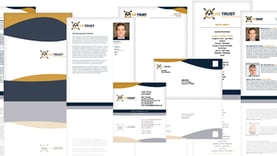Life insurance provides valuable protection for loved ones. While the primary purpose of pure life insurance protection is to provide a death benefit, many cash-value products offer "living benefits" that you can take advantage of during your lifetime. One major living benefit of cash-value life insurance is access to the cash values in times of need, such as to help pay for a child's education or to help fund retirement.

Efficiently accessing tax-free money often means taking policy loans. Many companies offer fixed and/or variable loans, and both options have their benefits. Variable loans generally provide more illustrated income, but this more aggressive illustrated income comes with a risk. Both loan types have two important factors:
- A credit interest factor on your borrowed cash value; and
- A loan interest factor applied to your borrowed money
The difference between the two loans comes down to how the factors are determined and applied.
Fixed Loans
Simply put, fixed loans have "fixed" factors. When money is pulled out of the policy your borrowed cash value earns a fixed rate in the fixed-interest crediting strategy. The loan owed to the insurance company also grows at a fixed rate. The cost of the loan equals the difference in the loan rate and credited rate. See the example below:
- Loan Crediting Factor: 4.9%
- Cost of Interest Factor: 5.0%
- Cost of Borrowing: 0.10%
Most products have some sort of guaranteed wash loan (no-cost or low-cost) available after year 10.
Variable Loans
With variable loans interest credited during the loan is not fixed. Instead, loaned cash values remain in the index-crediting strategy and are "working" as the crediting factor is based on the policy's actual index growth. The loan owed to the company also grows at a variable rate, often times based on the Moody's Corporate Bond Yield (CBY).
Therefore, the cost equals the difference in the average credited rate and the average loan rate (loan spread). Since the difference between the average policy year's index growth and the average Moody's CBY can often times be a net positive, there is a chance for positive arbitrage. See example below:
- Average Moody's CBY: 6.0%
- Average index credit: 8.25
- Benefit of borrowing: 2.5%
However, there is a chance to get upside down on a year-to-year basis.
- Annual Moody's CBY: 5.5%
- Actual Annual Index Credit: 0%
- Cost of borrowing: 5.5%
Pick One or Show Both?
So when everything is said-and-done, the key difference is the loan cost. With cash-value products, you don't have to pick a loan option until the client actually needs the money. However, most producers want to show loans coming out in pre-sale illustrations. We recommend running both and showing the client the income options. The most important issue is running variable loans with realistic expectations. The new AG 49 rule has leveled the playing field when it comes to variable loan arbitrage in illustrations.
The Impact of AG 49
The goal of AG 49 was to provide a more consistent illustration methodology from carrier to carrier, while at the same time, providing more conservative illustrations.
There are two main components to AG 49:
- New maximum illustrated rates based on a 55-year look back
- One percent maximum differential between illustrated credited rates and illustrated loan rates
The impact of the rule is therefore twofold. The projected accumulation values are limited because of the maximum illustrated rates and the projected policy loans are limited due to the one percent maximum spread between creditied rates and loan rates.
To unlock the power of Indexed Universal Life (IUL) you need to be able to position the product in a way that compels the client to take action. Not only does this webinar walk through a powerful software program that can be used with clients, but it also shows you how to generate more leads by providing turn-key marketing programs, seminars, and brochures.






